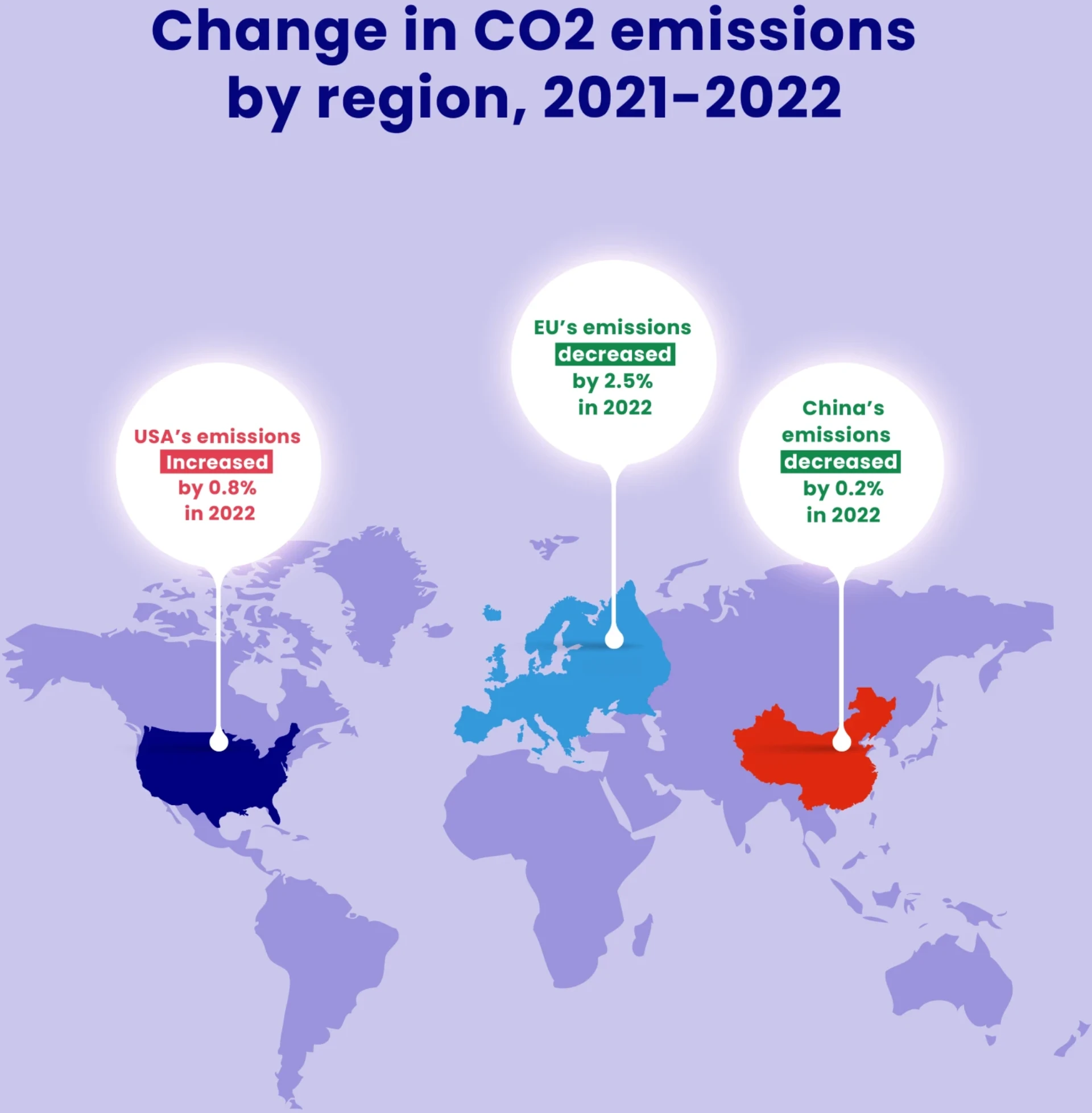- Home
- Current Affairs
- A Closer Look at CO2 Emissions ...
A Closer Look at CO2 Emissions in 2022: Trends, Impacts, and Progress
26-May-2023
In 2022, global carbon dioxide (CO2) emissions related to energy rose by 0.9% or 321 million metric tons (Mt), reaching a new record of over 36.8 billion metric tons (Gt). This increase was much smaller compared to the significant rebound of over 6% in 2021, following the volatile energy consumption and emissions patterns caused by the Covid-19 pandemic. The growth in emissions was slower than expected, considering the challenges faced such as energy price shocks, inflation, and disruptions in fuel trade flows. Despite these factors, the switch from gas to coal in many countries contributed to limiting the growth of emissions. The adoption of clean energy technologies like renewables, electric vehicles, and heat pumps also played a role in preventing an additional 550 Mt of CO2 emissions. Moreover, reductions in industrial production, especially in China and Europe, helped avoid further emissions.
Several specific challenges in 2022 contributed to the increase in emissions. Out of the 321 Mt CO2 growth, 60 Mt CO2 can be attributed to heightened demand for cooling and heating during extreme weather events, while another 55 Mt CO2 resulted from nuclear power plants being offline.


On a global scale, there was a growth of 261 million metric tons (Mt) in CO2 emissions from the power sector and 254 Mt from the transportation sector, including international bunkers. These increases outweighed the reductions achieved in the industry and buildings sectors.



Emissions from natural gas saw a decrease of 1.6% or 118 million metric tons (Mt). This decline was influenced by the already tight gas supply, which was further exacerbated by Russia’s invasion of Ukraine and the subsequent disruptions in trade. Europe experienced significant reductions in gas emissions, with a decline of 13.5%. The strongest year-on-year reductions were observed in the later months of the year. The region faced record-high gas prices due to a sharp decrease in Russian gas flows, although a mild winter helped lower household heating demand. In the Asia Pacific, there was also a decline of 1.8% in natural gas emissions, marking the largest year-on-year reduction ever witnessed in the region. On the other hand, the United States and Canada saw robust demand for natural gas, leading to a 5.8% increase in gas emissions in those countries.
Coal emissions reached a record high, growing by 243 Mt to nearly 15.5 billion metric tons (Gt) in 2022, indicating a 1.6% increase. This growth exceeded the average annual growth of 0.4% observed over the past decade. Emissions from oil also increased, rising by 2.5% or 268 Mt to 11.2 Gt in 2022. Approximately half of this year-on-year increase came from the aviation sector as air travel continued to recover from the lows experienced during the pandemic. Advanced economies rebounded faster, with aviation emissions reaching 85% of 2019 levels, compared to 73% in emerging markets and developing economies.




China’s energy-related emissions remained relatively stable between 2021 and 2022, with a slight decrease of 0.2% or 23 million metric tons (Mt) to approximately 12.1 billion metric tons (Gt). The growth in emissions from energy combustion was offset by declines in emissions from industrial processes. This overall decline marks the first since structural reforms in 2015 aimed at reducing emissions.
US emissions increased by 0.8% or 36 million metric tons (Mt) to reach 4.7 billion metric tons (Gt). Although the growth rate was slower compared to the significant increase observed in 2021, it deviated from the declining trend seen in the previous decade. Unlike many other countries that reduced their reliance on natural gas due to price spikes, the United States increased its consumption of natural gas. This resulted in a rise of 89 Mt in natural gas emissions, surpassing the 69 Mt decline in coal emissions.
Despite facing multiple challenges such as disruptions in the oil and gas markets, hydroelectric shortfalls caused by drought, and the shutdown of several nuclear plants, the European Union (EU) managed to reduce its emissions by 2.5% or 70 million metric tons (Mt). This achievement can be attributed to various factors including a mild winter, effective energy conservation measures, fuel switching, behaviour changes, and industrial production curtailment.






